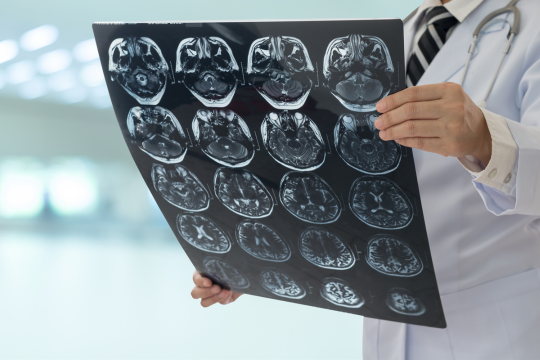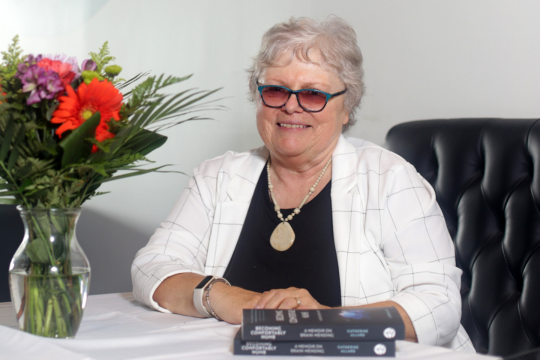
The whole practice of treating stroke patients changes profoundly every five to 10 years, but identifying a stroke early remains key.
Time is everything in stroke treatment, in the short and long terms.
“When someone has a stroke, the earlier you detect it, the sooner you call 911, the better the chances of a good outcome,” says Robert Fahed, a neurologist at the Ottawa Hospital.
In the longer term, the treatment of stoke victims has profoundly changed and improved, and that change continues apace.
“The whole practice changes completely every five to 10 years,” Fahed says. “I’ve been doing this for 12 years, and my job now has nothing to do with what it was 12 years ago. It’s a completely different job. Each breakthrough discovery significantly, dramatically increases and improves the prognosis of patients. It’s one of the most rapidly evolving fields of medicine. We are increasingly finding new ways to treat all types of strokes.”
This reflects the experience of Cathy Allard, a Federal Retirees member from Orleans, Ont., who suffered two strokes, but managed to build back a life that, while often difficult and challenging, is more active than she had expected it to be.
Allard recently published the book Becoming Comfortably Numb: A Memoir on Brain-mending to share her experience, and to inspire other stroke victims and their caregivers to put in the constant effort and determination it takes to achieve the best possible recovery.
“Never forget how treatment innovations can turn the impossible into the possible,” Allard wrote in her book.
“Never discount the potential impact of neuroplasticity — the brain’s ability to ‘rewire’ itself, and to adapt, heal and make new connections. Nor should you discount your own mind’s potential to master your thoughts and habits, and learn how to do things ‘differently.’”
Allard was 27 when she had her first stroke in 1984, while she played a new game called Trivial Pursuit with her husband and friends, as her equally new daughter slept nearby.
“In a matter of seconds, a brutally cold, stinging wave suddenly clutches down through every fibre of my entire right side,” she writes, “from the top of my head, through half my nose, jaw and neck, down through my arm and torso, and further down, down, down through the arm and leg to the ends of my fingers and toes. My entire right side has disappeared. I can see my arm, but it’s no longer connected to me.”

Cathy Allard, a Federal Retirees member from Orleans, Ont., has suffered two strokes, but has managed to build back a life that, while often difficult and challenging, is more active than she had expected it to be. Photo: Mike Carroccetto
Her companions acted quickly and drove her to hospital, where her four-decade experience with stroke care and recovery began. (Dr. Fahed strongly discourages driving yourself, or another person, to hospital if a stroke is suspected. “Even if you feel that you’re capable of driving, a stroke happens sometimes in such a way that patients don’t realize how severely affected they are,” he says. Also, “your stroke might worsen as you’re driving, and you could get paralyzed while you’re on the highway.” Any other person as driver is “probably panicking,” and the stroke victim could worsen and require immediate medical attention that would only be available in an ambulance, so call 911.)
Allard had her second stroke in 1990 and proceeded again with grim determination.
“Recovery never stops, as long as you keep working at it. If I can keep my mind open to receiving new stimuli, and if I keep feeding it different things to process, it’s amazing how much it can adapt and figure out how to do things differently,” she wrote.
Stroke treatment has also been adapting, Fahed says.
“We are continuously improving stroke care in every step, acute treatment, prevention, understanding, prognosis, disparities between men and women in stroke, because men and women are not affected the same way.”
Treatment of a stroke — or possible stroke — starts with acting fast.
He references the FAST guide and stresses that if you or someone with you has any of those symptoms, “do not wait for a single minute, even if the symptoms resolve. Call 911, immediately.
Every minute that goes by when someone has a stroke, they’re losing millions of cells in their brain. Every minute that goes by reduces your chances of doing well after a stroke. … It’s very important to be very fast.”
Stroke remains one of Canada’s leading causes of mortality and of disability amongst those who survive, though treatment continues to improve in immediate and later care. Acute treatments now include intravenous thrombolysis, “an intravenous perfusion of a clot-busting drug that will basically spread across your bloodstream, find the clot where it is in the brain and dissolve it.”
A more recent treatment is a thrombectomy, and Canada has been a leader in this research.
“It’s a small surgery that consists [of] navigating little devices, little wires through the leg with a needle, inside the blood vessels from the leg all the way up to the brain to then manually extract the clot with various devices.”
There’s also progress in understanding the different causes of strokes, “at figuring out the mechanism of each patient’s stroke. We also have a whole lot of new sets of drug classes and drugs that we can give for every patient in a personalized manner, based on what their workup has shown, to target the mechanism that caused the stroke in each patient.”
Allard has witnessed many of these changes firsthand, and is determined to help others who survive strokes.
Her own life changed dramatically, and in perhaps surprising ways. She had to give up playing piano, for instance, yet she was able, with help from her supportive family, to start kayaking and snowshoeing. In 2018, she and her husband travelled to Greece and climbed the Acropolis.
“It’s not about achieving perfection,” she says in an interview. “It’s about adapting to the life that’s been given to you and making the most of it.”
Her book, she says, is “for caregivers and for people who are in a difficult situation, how to get through it. The burden of caregiving for people with disabilities is so onerous because nine times out of 10, it’s the family that has to do it. And when a person has a stroke, the whole family suffers because everything is geared on them. I’m also so lucky that I was able to get back into the federal public service because I have a good health care plan.”
Stroke identification
The FAST test for possible strokes underscores the urgency of reacting quickly if you or another person may be having a stroke.
Face: Is it drooping?
Arms: Can you raise both?
Speech: Is it slurred or jumbled?
Time: to call 911
Risk factors: Unhealthy diet, weight, stress, physical inactivity, smoking, alcohol and drug abuse. Also, high blood pressure, high cholesterol, diabetes, atrial fibrillation.
Courtesy Heart and Stroke Foundation of Canada, heartandstroke.ca
Supporting stroke research
Dr. Fahed says public donations are critical for stroke research and he encourages donations to hospitals, stroke centres or the Heart and Stroke Foundation of Canada.
“All of that research, which helps improving the care of all the patients, can only be done through donations from people all across the country. If you’re considering a donation, thank you in advance, because without today’s research, we cannot improve tomorrow’s care.”
The Heart and Stroke Foundation analyzes research application grants “and allocates dedicated funding for the most promising research projects. Trust me, the money is being really well used for research.”

